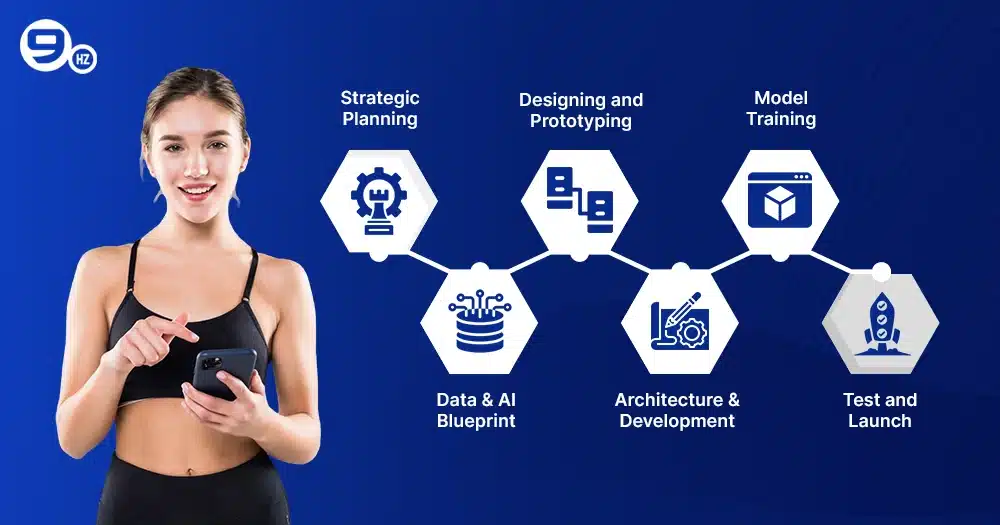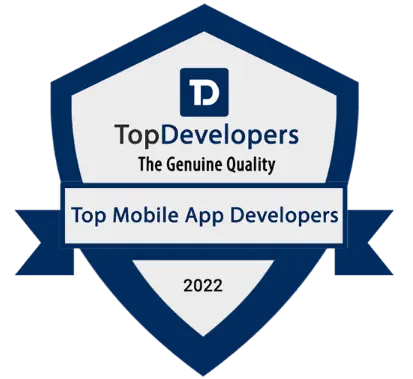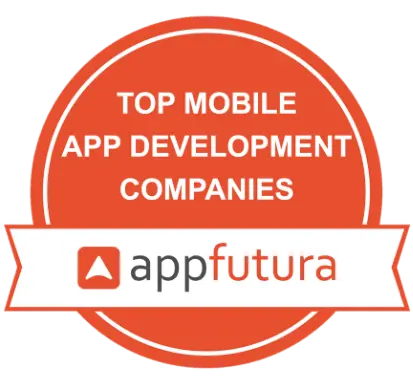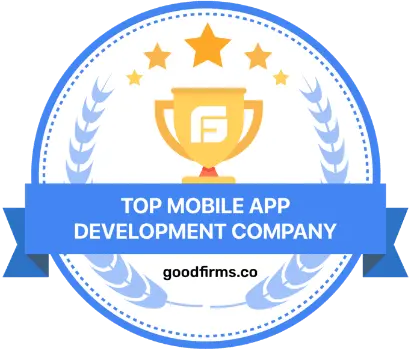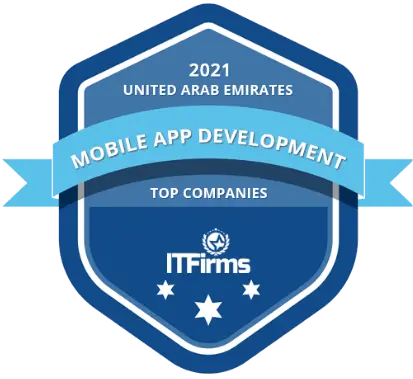The world is more concerned about fitness than ever before, and technology is playing a key role in making things easier and more accessible. While the busy schedule in the fast-moving world doesn’t allow everyone to spare a few hours every day for their fitness practices, having mobile apps that connect users to fitness coaches to get training while sitting at home has become the most popular way of maintaining a healthy lifestyle. The affordable AI fitness app development has further encouraged gym owners and fitness center administrations to build their own smart software to serve their customers better.
According to Statista, the revenue in the digital fitness and well-being market is all set to reach $65.7 billion by the end of 2025, which will further grow with a CAGR of 5.58% to reach the milestone of $86.25 billion in 2030. Thus, there is no doubt that technology has been reshaping the fitness industry, and it will continue to redefine the domain for the upcoming decade.
If you are also looking for ways to be a part of this burgeoning niche, building an AI based fitness app can be one of the best ideas to do so. Therefore, we have curated this blog to bring all insights about AI fitness app development cost, techniques to control costs, different hiring models to engage developers, and much more. Let’s begin-
What Is an AI Fitness App?
AI fitness apps are basically advanced software programmed with different features that help users maintain and track their fitness journey. For instance, some of the AI fitness apps offer smart and automated instructors that suggest and guide through the best set of exercise schedules by analyzing data like users’ age, gender, goals, health information, weight, medications, and much more. Similarly, another fitness app can be designed to curate personalized diet plans according to the availability of resources, overall fitness goal, cuisine preferences, daily schedule, etc.
AI fitness apps are designed to analyze the relevant information shared by the users and thus offer personalized assistance in a pre-defined manner. These apps are often cost-efficient, available around the clock, and more accessible than a physical fitness center or gym. The key features of an AI fitness app are personalized plans, real-time feedback, holistic wellness, data-driven insights, adaptive workouts, etc.
How to Create an AI Fitness App?
The development approach to build an AI fitness app can differ from one developer to another. However, the overall flow of the project remains the same. Having an idea about the ideal development process helps you ensure that your project remains on track and that KPIs are being achieved.
1. Strategic Planning
- Brainstorming with the development team to identify the type of app (personalized exercise plans, nutrition coach, yoga dedicated app) that has to be developed.
- Identify the target audience and key performance indicators.
- Ensure data security and compliance needs like GDPR, CCPA, PHI boundaries, along with the risk class, and liability language.
- Deliverables: KPI tree, compliance checklist, basic GTM, PRD.
2. Data & AI Blueprint
- Deciding use cases like pose/form detection, injury-risk flags, meal guidance, rep counting, and workout plan generation.
- Identifying different data sources like wearables, user input, camera stream, verified content library, etc.
- Choosing different AI models like computer vision, recommendation engine, large language model, etc.
- Deliverables: Model selection matrix, retention of raw media policy, POC metrics, data schema.
3. Designing and Prototyping
- Curating core user journey like onboarding, daily plans, progress, recovery, live workout, etc.
- Create a clickable prototype, wireframe, while integrating features like haptics, design motion, and cues for timings/reps.
- Ensuring easy accessibility for users and creating localization-ready copies.
- Deliverables: Content styleguide, UX specs, acceptance criteria per feature.
4. Architecture & Development
- Creating the app architecture according to the platform of mobile app (iOS/Android), user/profile service, API gateway, analytics, workout services, notification, feature flags.
- AI runtime to ensure on-device model for pose, vector database for content retrieval, and server inference for plan generation.
- Integrations of Apple Health/Google Fit, OAuth, Stripe/Razorpay, CDN for video, crash/analytics.
- Executes basic MLOps, secret management, CI/CD with staged releases.
- Deliverables: Sprint plans, tech specification, and observability dashboards.
5. Model Training
- Label data according to different categories, like diverse body types, lighting, camera angles, along synthetic augmentation of some movements.
- Evaluation of the AI model with key business metrics like plan adherence uplift, coach CSAT, rep accuracy, etc.
- Ensuring the mobile optimization with edge-case testing.
- Deliverables: Validated models, red-team support, and rollback path.
6. Test and Launch
- Conducting quality analysis with low-bandwidth tests, device matrix, battery/thermal budgets, etc.
- Run experiments for different navigations like user onboarding, nudges, paywalls, etc.
- Launch playbook like ASO keywords, app store assets, and partner boundless.
- Post-launch support for cohort analytics, communication features, content cadence, and churn triggers.
- Incorporate features like pro plans, corporate wellness, and coach marketplace.
- Deliverables: Analytics baseline, GA release, backlog for next 90 days.
7 Core Features of an AI-Based Fitness App
Features have always been the backbone of any app, and features help to differentiate the digital product in a competitive landscape. However, it is highly important to prioritize the right features to ensure usability without going over budget. Here are some of the key features that you must include while building an AI fitness app.
1. 1-on-1 Coaching Agent
An AI fitness app is always incomplete without a smart fitness coach that helps to curate a personalized fitness plan. The agent is also designed to closely monitor workout forms and correct the user to prevent the chances of injuries. At the same time, the AI coach must have the integration of a recommendation engine so that it can actively analyze the users’ exercise movement to identify the potential risks and suggest modifications or retention strategies.
2. Adaptive Learning
An AI fitness app must have an adaptive learning capability so that it can automatically make the required changes according to particular improvements in the users’ fitness journey. At the same time, adaptive learning will also make it possible for the AI fitness app to adjust the intensity of the workout according to the users’ readiness.
3. Progress Tracking
This is one of the most basic features that is designed to monitor the key metrics like steps, calories burned, heart rate, and much more. All this data can be fetched from the sensors or wearable devices to visualize the progress and curate an informational dashboard for the user. At the same time, progress tracking also allows the user to set their fitness goal and track their progress in real time.
4. Wearable Integration
Most of the data for a fitness app can only be fetched from an external wearable device like a fitness band or a smart watch. Therefore, it must be ensured that the AI fitness app can be easily integrated with such wearable devices for easy data exchange and accurate fitness analysis by the app.
5. Nutrition Logging
This is one of the most used features in the fitness app. Nutrition logging allows users to simply scan a QR code on the packed food items, and the app lists the entire nutritional value in one click. It makes it much easier for the users to get better control over their diet and achieve their fitness goals even quickly.
6. Social Connectivity
The leading AI fitness apps globally carry the social connectivity feature to the users, which allows the seamless sharing of their fitness journey with their friends and followers. This feature offers a competitive edge in today’s marketplace as social media has emerged as one of the biggest influences for people to engage in the fitness journey.
7. In-App Chat/Call
The AI fitness apps offering personalized AI or human trainers to their users must incorporate an in-app chat or calling feature that enables users to connect to their personal trainer. This feature can be used to schedule the workout session, ask queries, change timing, and much more. In-app chat and call feature eliminates the confusion for the communication gap among the users and thus increases the retention rate.
How Much Does It Cost to Develop an AI Fitness App in 2025?
AI fitness app development cost is highly variable due to the tens of factors affecting the development process. For example, an AI fitness app trained with a basic dataset to reply to a particular kind of query will be way more cost-efficient as compared to an advanced AI fitness app that can analyze the user data to suggest personalized fitness plans and diet recommendations. Therefore, the project type highly influences the AI fitness app development cost.
Talking about the approximate cost of building an AI fitness app, it can range between $30,000 to $300,000. However, as we interpreted earlier, it is an entirely variable cost that can only be determined with a thorough analysis of the client’s requirements.
1. Cost Breakdown by App Complexity
The complexity of the software is directly proportional to the AI fitness app development cost. The reason behind the statement is that highly complex apps generally require a bigger team, additional skills, intensive hardware, and more time, which automatically increases the development cost. At the same time, complex AI apps are built using a range of technologies, which increases the load and thus requires a scalable architecture. Here is the cost breakdown for an AI fitness app on the basis of different complexity levels.
| Project Complexity | Estimated Cost (USD) |
|---|---|
| Basic AI App Development | $35,000- $80,000 |
| Medium Complexity AI Solution | $80,000- $2,00,000 |
| Advanced AI App | $2,00,000+ |
2. AI Fitness App Development Cost based on Project Phases
An app development process comprises different project phases in which the different teams play their own role in building the various parts of the project. For example, the design and frontend development team is responsible for handling the overall appearance of the software. At the same time, the development team is responsible for building the overall architecture and integrating the required technologies into the solutions. Similarly, the quality analysis team ensures that the final solution doesn’t carry any errors and performs seamlessly.
However, you must understand that all of these processes require certain resources in the form of digital data, hardware, software programs, and human experts. Thus, every phase has a defined contribution to the cost of building an AI fitness app.
| Different App Phases | Estimated Cost (USD) |
|---|---|
| Ideation & Planning | $2,000- $5,000 |
| Designing and Prototype | $10,000- $15,000 |
| Development & Programming | $15,000- $20,000 |
| AI Engineering & Training | $20,000- $30,000 |
| Quality Testing | $10,000- $15,000 |
| Final Deployment | $5,000- $8,000 |
3. AI Fitness App Development Cost Based on Different App Types
The fitness industry is a vast domain, and there is no boundary on the creative ideas to build a mobile app. For example, you can build an AI app for diet recommendation, exercise guidance, fitness journey tracking, human health vitals tracking, a dedicated yoga course, a professionals marketplace, and much more. However, every type of fitness app requires the integration of different technologies and development hours. Thus, the cost of building these apps also differs from each other.
Here is a rough estimate of the AI fitness app development cost based on app type-
| App Type | Median Cost (USD) |
|---|---|
| Activity Tracking | $100,000 |
| Diet and Nutrition App | $80,000 |
| Workout and Exercise App | $115,000 |
| Wellness and Mental Health App | $110,000 |
| Yoga and Meditation App | $90,000 |
| AI LLM App | $150,000 |
4. AI Fitness App Development Cost Based on Hiring Models
A good artificial intelligence development company offers different hiring models to hire developers. Every engagement model is curated for a specific type of project and thus gives complete control to the client over the project cost. For example, the ODC (Offshore Development Center) is a popular hiring model where a company hires an offshore development company to build a separate facility and curate the solution. It ensures that operations at the headquarters are not disturbed. Then there is the BOT (Build-Operate-Transfer) model in which an AI development company hands over the entire project resources, including the experts, to the client after the contract timeline.
The hourly model is designed for a project with a huge scope of changes, where the client can pay for the time and resources spent by developers while working on the project. The hybrid model is designed especially for post-deployment maintenance and support.
| Hiring Model | Estimated Cost (USD) |
|---|---|
| Offshore Development Center | $100,000- $200,000 |
| Build-Operate-Transfer | $80,000- $150,000 |
| Hourly Hiring | $50- $100 Per Hour |
| Hybrid Model | $20,000- $50,000 |
5. AI Development Cost in France According To Development Approach
When building an AI fitness app, there are mainly two approaches that help to curate a full-fledged mobile solution. The first one is custom mobile app development that enables businesses to build the AI solution from scratch while imparting all the features and functionalities according to personal preferences and requirements. However, this is a time-consuming process with a huge scope of customization; thus, the cost is generally higher. The other one is a white label solution where the developers make the necessary changes in the existing solutions to make them suitable for the real-time business needs. This development approach takes less time, has a lower scope of customization, and is cost-efficient.
| Development type | Estimated Cost (USD) |
|---|---|
| Custom AI Development | $60,000- $100,000 |
| White Label Solution | $40,000- $60,000 |
Factors That Influence AI Fitness App Pricing
As interpreted in the earlier section, there are several factors that influence the AI fitness app development cost. Any changes in the requirements or these components can make a significant difference in the overall AI development cost.
1. Location of Development Team
The location of the AI app development company that you hire for your project says a lot about the overall cost. The reason behind the particular circumstance is that AI developers in countries like the USA, UK, Australia, and other European countries of Europe are generally costlier, which increases the cost. On the other hand, you can find the developers with the same expertise and experience at half the cost when choosing countries like India for your AI fitness app development project.
2. Availability of Data
The performance and efficiency of an AI app are entirely defined by the quality and quantity of data used in the training of models. A good AI app requires refined data in a good quantity so that it can easily fetch the information and provide the relevant results. However, it is important to understand that the availability of data plays a crucial role in defining the project cost. If all the required data is available with the client, the cost reduces. On the other hand, if the data has to be purchased, it adds to the development cost.
3. Third Party Integrations
It generally requires third-party integrations and API integrations to bring certain functionalities into the AI fitness app. For example, you might need a database to access the details of all the gyms around the world with their basic details. While some of the third-party services and APIs might be available for free, most of these integrations have to be purchased or subscribed which contributes to the AI fitness app development cost.
4. Customization and Designs
Building the AI fitness app from scratch offers a lot of space for customization, whether in terms of features or the user interface. A customized app better caters to the specific business needs and target audience. However, it is also important to understand that high customization in design and features requires additional resources and integrations, which ultimately adds to the AI fitness app development cost.
5. Maintenance and Support
It is important to have the post-deployment maintenance and support from IT and AI professionals. It helps to consistently maintain the app performance, remove errors, and scale the solutions. At the same time, this maintenance and support also ensures to addition of new features according to changing user needs. The maintenance and support come at an additional cost, which is included in the overall project planning.
6. Legal Compliances
Fitness includes physical and mental health, along with food recommendations, which makes it a highly sensitive domain. Thus, there are different rules and compliances for such apps in different regions and countries. For example, the EU AI Act requires businesses to present the complete, authentic documents for project scope, design, and testing to ensure its safety for the users. Ensuring legal compliance requires support from legal professionals, which also influences the overall cost.
7. Project Timeline
The project timeline is directly proportional to the app development cost, especially when developers are working on the “Time and Resources” model. Therefore, as the project timeline increases, the cost also increases and vice versa.
How Much Time Does It Take To Build an AI Fitness App? (Timeline Breakdown)
Similar to the AI fitness app development cost, the project timeline is also determined by analyzing certain factors. For example, building a simple AI fitness app with a few integrations will take less time as compared to building a highly advanced and customized solution with a lot of third-party integrations.
Similarly, the size of the development team is also a core factor that impacts the overall project timeline. A small team consisting of a few professionals will take more time to build an app. On the other hand, a large team of professionals with all the required skills will take comparatively very little time.
However, all the steps in the AI fitness app development process are pre-planned during the brainstorming phase so that the key performance indicators can be recognized and the overall project follows the planned strategy to achieve the expected outcomes. Here is the projection of the estimated timeline that each project phase consumes while building an AI fitness app-
| Project Phase | Simple Apps | Medium Complex Apps | Highly Complex Apps |
|---|---|---|---|
| Research & Brainstorming | 1-2 weeks | 2-3 weeks | 4 weeks |
| Strategic & Resource Planning | 1-2 weeks | 1-2 weeks | 3 weeks |
| Wireframing | 1 weeks | 1 weeks | 2 weeks |
| UI/UX Design | 1-2 weeks | 2-4 weeks | 4 weeks |
| Backend Development | 2-4 weeks | 3-6 weeks | 7-10 weeks |
| Frontend Development | 2-3 weeks | 2-5 weeks | 6-9 weeks |
| API & Third Party Integrations | 1 weeks | 1-2 weeks | 2-3 weeks |
| Testing & Quality Analysis | 2 weeks | 3-4 weeks | 4-6 weeks |
| Deployment | 1 weeks | 1-2 weeks | 2-4 weeks |
| Post-Deployment Maintenance | Ongoing | Ongoing | Ongoing |
Estimated Total Time Required
- Simple App- 10-12 Weeks
- Medium Complex App- 16-20 Weeks
- Highly Complex App- 32-50 Weeks
Cost Based on Development Approach
Similar to hiring models, there are various approaches adopted by businesses to hire AI developers and curate innovative solutions. Each of the development approaches offers certain advantages over the others, and thus, the cost is also different. Let’s talk about some of the best development approach and their impact on AI fitness app development cost-
1. In-house
As the name suggests, this development approach enables the business owners to hire a team of software developers to work in-house with other employees of the organization. This model is particularly designed for long-term and complex projects to offer end-to-end project control to the client.
In-house development approaches are generally very expensive.
2. Outsourcing
This is one of the best development approaches that goes well with all types of projects. The Outsourcing model enables businesses to hand over the entire project responsibilities to an experienced AI development company to get the output at the end.
The cost of outsourcing is mutually decided by the development team and client on the basis of project requirements.
3. Using AI App builders / low-code
Technologies have also introduced some shortcuts to build mobile apps without diving deeper into coding and programming. The first one is a low-code app, which basically depends on the drag-and-drop functionalities to design the app. Another one is an AI app builder, where a platform is designed to curate an app by processing simple prompts.
This development approach is generally most cost-efficient as it requires very little investment in the beginning.
Real-World Examples of Successful AI Fitness Apps
AI fitness apps are a well-grown domain with many industry leaders successfully acquiring millions of users and a good revenue. Here are the names of some real-world examples of successful AI fitness apps-
1. Fitbod
Fitbod is a personalized strength training app that offers custom-tailored recommendations to users on the basis of their fitness journey and goals. First of all, the app is designed to guide you through a number of training exercises for different body muscles and intensities. At the same time, users can also easily track the progress, identify areas of improvement, and offer plans for further growth.
Key Highlights
- 15M+ Downloads
- 120M+ Workouts Logged
- 4.8/5 Rating
2. Freeletics
Freeletics is a renowned AI fitness app in Europe that helps users work out anytime and anywhere with the best digital trainers. The app offers AI-powered personal trainers that offer personalized HIIT workout plans on the basis of users’ fitness level, goals, experience, and much more. At the same time, it also adapts to the daily routine of a user to design the exercise plan accordingly. The user can also choose from a range of workout styles like cardio, weight training in the gym, and HIIT to start the fitness journey.
Key Highlights
- 10M+ Downloads
- 350+ Exercises
- 20 Training Journeys
How to Reduce AI Fitness App Development Cost (Practical Tips)
Many of the businesses compromise with the developers’ expertise and app features to reduce the AI fitness app development cost. However, these have never been practical and very efficient ways of controlling the cost. Lowering the app quality will also make it challenging to monetize the solution, and thus, the ROI will also fall.
Therefore, we have listed some of the practical tips that will help you to reduce the AI fitness app development cost without affecting the app quality-
- Make sure that you curate a development plan in the beginning to ensure that the process navigates toward the goals and no resources are wasted.
- You can start with an MVP (Minimum Viable Product), which is a basic version of your app with all the essential features. It helps to test the market readiness and gather user feedback before investing in complex features.
- Using the existing APIs and pre-trained AI models will save you on the cost of building an AI model from scratch. Thus, it will save you time as well as money.
- Relying on the existing frameworks, libraries, third-party plugins, etc., also accelerates the project development and thus reduces costs.
- Choose the right hiring model according to your particular project requirements so that you only pay the development team for what is required in the app.
- Hire the developers from Asian countries like India to save more than half of your developers’ cost without compromising efficiency and skills.
- Hire an experienced development team. They might be expensive in the beginning, but they will also save you from thousands of miscellaneous costs.
- Automate the testing process to find bugs earlier and reduce the testing time & cost by up to 20%.
Why Choose The NineHertz for AI Fitness App Development?
Choosing the right AI development company is the most crucial task in order to build a solution that connects to real-time user needs and generates a good return on investment. The NineHertz has experience of 12+ years in the field of software development and artificial intelligence. We have a team of 250+ IT professionals, specializing in their respective domains. Our team has partnered with businesses worldwide to help them digitize their operations and strengthen their presence on the online landscape.
- We offer a free consultation session to help businesses identify their challenges and opportunities to curate personalized development plans. Our consultation also offers accurate insights into the project timeline and cost.
- Our team consists of dedicated domain experts who help to understand industry gaps and curate the solutions accordingly to fill those gaps.
- The NineHertz serves businesses of different sizes and thus offers cost-efficient AI development services to make AI affordable and accessible to everyone.
- We excel in all the AI domains like machine learning, natural language processing, computer vision, large language models, and AR/VR to build full-fledged solutions.
- Our team offers ample maintenance and support to ensure that the AI fitness app performs well in the live environment.
Conclusion
Building an AI fitness app can be one of the best ideas to grow sustainably in this burgeoning market. However, the cost of building an AI fitness app influences the decisions of most businesses. Therefore, we provide cost-efficient development services without impacting the project quality to enable our clients to embrace technologies without breaking their budgets. We have helped thousands of businesses around the world to digitize their operations, better manage their operations, and improve efficiency.
If you are also looking to build an AI fitness app, we invite you to our free consultation session. Plan your project strategically to save costs and generate significant revenue for a lifetime.
Frequently Asked Questions (FAQs)
1. How much does it cost to build an AI fitness App?
Answer- It generally costs $30,000 to $300,000 to build an AI fitness app. However, the cost is influenced by several factors like project complexity, location of development team, data availability, customization, third-party integrations, and much more that can increase or decrease the AI fitness app development cost.
2. How much time does it take to build an AI fitness app?
Answer- It can take 3-9 months to build a full-fledged AI fitness app. Similar to the development cost, the timeline is also influenced by different factors like hiring model, team size, UI designing, development approach, third-party integrations, data availability, etc.
3. What are the monetization models for an AI fitness app?
Answer- You can monetize your fitness app with different models like subscription model, registration fee, advertisement revenue, in-app purchases, freemium model, etc.
Great Together!

